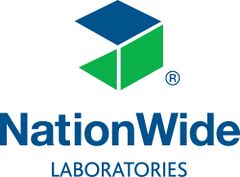Equine reproduction
Progesterone
Quantitative progesterone is measured in a serum sample taken 18 - 25 days post service. This test is very useful for thoroughbred mares, where timing is critical, but further testing at a later date is required to confirm pregnancy (see below).
Please visit www.nwlabs.co.uk or see our current price list for more information
PMSG
PMSG is produced from the endometrial cups from day 40-120 post covering (approximately). However, the endometrial cups continue to produce PMSG for some time after foetal death and oestrone sulphate should be used to confirm the presence of a live foal after 100 days.
Please visit www.nwlabs.co.uk or see our current price list for more information
Oestrone sulphate pregnancy test
Oestrone sulphate (O-SO4) is a sensitive pregnancy test in horses and demonstrates the presence of a live foal. The concentration decreases very rapidly after foetal death. Oestrone sulphate increases from around 100 days post covering and remains detectable until very close to term. This assay may also be used in donkeys as a late pregnancy test.
Please visit www.nwlabs.co.uk or see our current price list for more information
Total urinary oestrogens
Total urinary oestrogens may be used as a late pregnancy test (>100 days gestation).
Please visit www.nwlabs.co.uk or see our current price list for more information
Summary of equine pregnancy tests
| Test | Days Gestation |
|---|---|
| Progesterone | 18-25 |
| PMSG | 40-120 |
| Oestrone sulphate | >100 |
| Total urinary oestrogens | >100 |
Cryptorchidism (rig) tests
If the presence of a whole testicle is suspected then a basal testosterone may provide confirmation. For investigation of incomplete castration it is preferable to measure oestrone sulphate, or perform an hCG stimulation test. Both O-SO4 and the hCG stimulation test should be used if the animal is likely to be the subject of any dispute or court case.
Please visit www.nwlabs.co.uk or see our current price list for more information
Oestrone sulphate determination
Measurement of oestrone sulphate in a single sample can distinguish between true and false rigs but a small number of animals tested will produce equivocal results. An hCG stimulation test is recommended for further assessment in these individuals. The oestrone sulphate test must not be used in donkeys or animal less than 3 years old.
- Take 5ml of blood into a plain or heparin tube
- If possible, separate the serum or plasma before dispatch to the laboratory
Please visit www.nwlabs.co.uk or see our current price list for more information
hCG Stimulation Test
The hCG stimulation test may be used to identify cryptorchidism or detect testicular tissue in virtually any species. Castrated animals have low basal levels of testosterone and show little or no increase in testosterone following the administration of hCG. Males with residual testicular tissue usually have higher basal levels of testosterone which tend to increase following hCG stimulation. Animals with normal testicular function have basal testosterone values within the reference interval and show adequate stimulation post hCG. This is the recommended test for horses less than 3 years old, and those with borderline oestrone sulphate results.
- Take 5ml of blood into a plain tube
- Inject 6000IU hCG i/v (Chorulon®; Intervet)
- Take a second sample between 30 minutes and 2 hours after hCG injection
- If possible, separate the serum before dispatch to the laboratory and label tubes clearly
